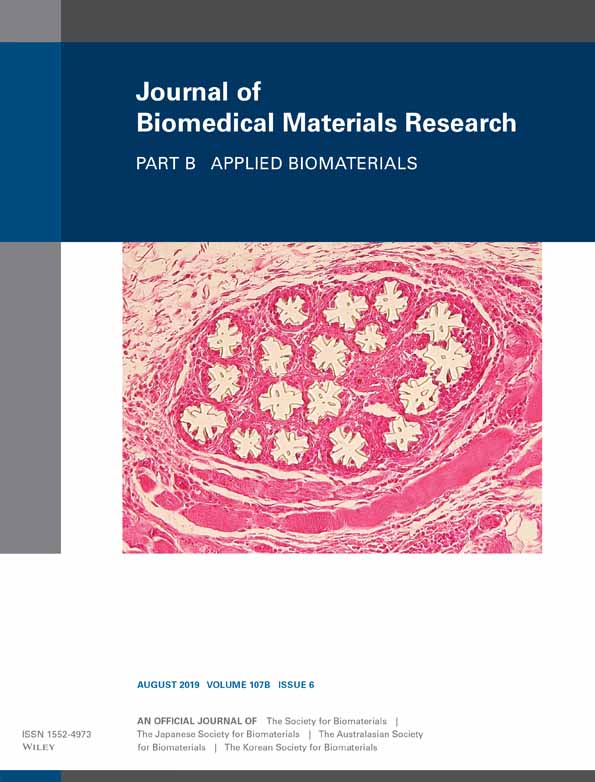Fabrication and evaluation of bacterial nanocellulose/poly(acrylic acid)/graphene oxide composite hydrogel: Characterizations and biocompatibility studies for wound dressing
Abstract
Graphene oxide (GO) is a potential material for wound dressing due to its excellent biocompatibility and mechanical properties. This study evaluated the effects of GO concentration on the synthesis of bacterial nanocellulose (BNC)–grafted poly(acrylic acid) (AA)–graphene oxide (BNC/P(AA)/GO) composite hydrogel and its potential as wound dressing. Hydrogels were successfully synthesized via electron-beam irradiation. The hydrogels were characterized by their mechanical properties, bioadhesiveness, water vapor transmission rates (WVTRs), water retention abilities, water absorptivity, and biocompatibility. Fourier transform infrared analysis showed the successful incorporation of GO into hydrogel. Thickness, gel fraction determination and morphological study revealed that increased GO concentration in hydrogels leads to reduced crosslink density and larger pore size, resulting in increased WVTR. Thus, highest swelling ratio was found in hydrogel with higher amount of GO (0.09 wt %). The mechanical properties of the composite hydrogel were maintained, while its hardness and bioadhesion were reduced with higher GO concentration in the hydrogel, affirming the durable and easy removable properties of a wound dressing. Human dermal fibroblast cell attachment and proliferation studies showed that biocompatibility of hydrogel was improved with the inclusion of GO in the hydrogel. Therefore, BNC/P(AA)/GO composite hydrogel has a potential application as perdurable wound dressing. © 2019 Wiley Periodicals, Inc. J Biomed Mater Res Part B: Appl Biomater 107B: 2140–2151, 2019.
CONFLICT OF INTEREST
No benefit of any kind will be received either directly or indirectly by the author(s).




